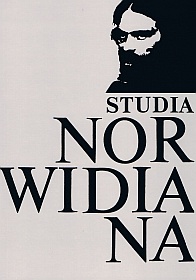Correspondence of arts, or monotony of hills (transl. by Tadeusz Karłowicz)
Abstract
The article is concerned with a discussion and assessment of Ilona Woronow's book Romantyczna idea korespondencji sztuk. Stendhal, Hoffmann, Baudelaire, Norwid (The Romantic Idea of Correspondence of Arts. Stendhal, Hoffmann, Baudelaire, Norwid) (Kraków 2008) devoted to one of the most important ideas in the epoch. The author tries to define the theoretical and critical basis of the whole phenomenon in the perspective of four important figures of literary life of that time. She focuses first of all on the semantic dimension of the problem – she tries to show and solve the intricacies and ambiguities of Romantics judgments and opinions. However, she pays almost no attention to the aesthetic or axiological aspect of the concept of “correspondence of arts”, which leads to narrowing the whole research perspective. This unconscious limitation also leads to a great degree to a lack of clarity of the argumentation. In the book only the chapter devoted to Stendhal is redeemed, as well as some parts treating about Norwid (a good reading of the poem Nie myśl, nie pisz – podmaluj (Do not think, do not write – just paint) is noteworthy). The whole has a fragmentary nature, which presses heavily on it, and the multitude of quotations devoid of their context and of penetrating commentaries, the numerous digressions and unexpected turns of the narrative lead the reader towards some “semantic forest”, and not to a clear conclusion: in fact, there is no clearly distinguished point of departure and no clearly determined aim. This is why the reader who was promised a view from the tallest mountain is disappointed, as he is only given the monotony of hills.
Copyright (c) 2012 Studia Norwidiana

This work is licensed under a Creative Commons Attribution-NonCommercial-NoDerivatives 4.0 International License.





